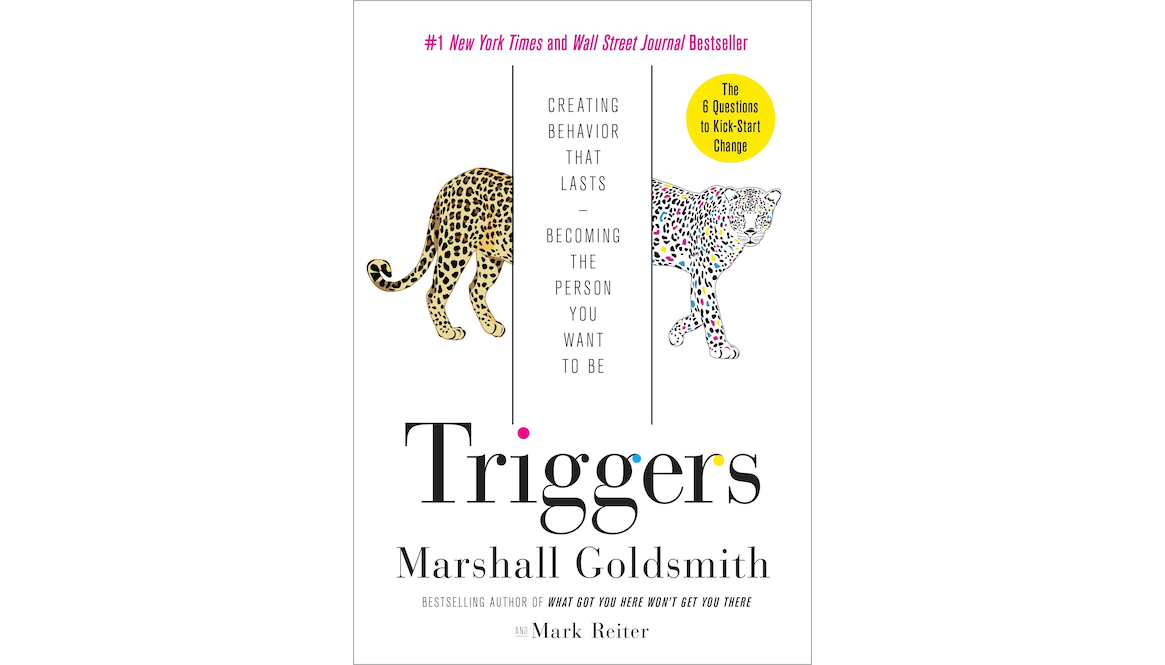I normally keep whatever I learn from books to myself. I still take notes, sometimes leave reviews on Goodreads, and use the things I’ve learned in my day-to-day life, but very rarely I write about them on my blog. I touched upon a book in another blog post before that I encourage you to go take a look at, but today, I’m going to review a book that was on my Wishlist for a while now. Buckle up for a short review of Triggers: Creating Behaviour That Lasts — Becoming the person you want to be!
Triggers is a fantastic book written by an expert author, Marshall Goldsmith. Goldsmith is a leadership coach that has coached multiple world renown leaders, the likes of Alan Mulally of Ford Motor Company and Jim Yong Kim of the World Bank. He points out some very simple behaviours and reactions that we do day in and day out, but we don’t notice how profoundly they affect us or the people around. His book tries to give us an insight into how we manage to let ourselves down when we know how to lift ourselves up, whether we are the CEO of an international conglomerate or not.
Goldsmith starts with presenting a clever 4-quadrant matrix of “what we want and need,” “what we don’t want, but need,” “what we don’t need, but want” and “what we neither need nor want.” Trying to do more of the first category and less of the last is something we could always work on and Triggers gives us some insights based on previous experience.
The book categorizes leadership into four different styles. Some employees need directing. You need to give them exact instructions and make sure they follow them to the period. Some need coaching: you give them the instructions and ask them what they think and if they want to tweak it before getting their hands dirty. Some need supporting. That’s when you tell them what the task is and ask for their input on instructions and how it should be done. And there is delegating. You give the assignment. You are there if they need any help, but they are on their own for the most part, because they have proven that they can do it.
Triggers talks about how different employees, based on their level of satisfaction with their jobs, their personalities, etc., could fit into the “employee engagement wheel.” An employee can be committed, i.e. genuine with clients/customers. That’s when (s)he is actively and positively engaged. If the employee is passively but still positively engaged, (s)he is a professional. However, employees could also be cynical or hostile. When they are indifferent to customers and bored with their jobs, they become the former (passive and negative) and when they dislike their jobs and can’t tolerate customers, that’s when they are the latter (actively negative). We encounter employees from all four of the these categories everyday and it’s not a surprise that we fit into one of the four as well. Knowing which one we fit into could help us improve and move to a better category that will not only help us become a better person, but also help people around us be happy as well.
Another concept I really liked in this book is the “wheel of change.” It shows us how the concepts changing, keeping, positive and negative could be combined to end up with creating positive changes, preserving current positive attributes, eliminating negative attributes and accepting the negative aspects we can’t change. This might be a simple idea or just a reminder of what we already know, but we rarely act on it and put together a list with these titles in it.
Goldsmith also teaches us the distinction between asking passive vs active questions. When we ask how well someone performed, we are asking passive questions and this gives the person the ability to use their environment as an excuse. But, when we ask how much they tried, they have to think about what they did themselves. This, once again, emphasizes the fact that we are superior planners, but inferior doers: something the author likes to point out every so often.
I’m the type of person that doesn’t need constant supervision or follow-ups to get something done, excluding some friendly nudges here and there of course, but that doesn’t mean I can be successful without structure. This book made me rethink the importance of structure. In Goldsmith’s own words, “structure not only increases our chance of success, it makes us more efficient at it.” Having a routine doesn’t make us or our lives boring, it gives it structure. Developing a daily active questions list helps us in giving our lives even more meaning. One of the reasons is that we perform better when we know we will be tested, regardless of who the tester is and if we know the questions ahead of the time.
“Marginal motivation produces a marginal outcome,” is another great quote in the book. If we want to improve, we have to accept that we have flaws and weaknesses and then start woking on ourselves. Most of us deceive ourselves into thinking that the real us is the one that has all our strengths, not the one that also includes our weaknesses. Just because we don’t acknowledge the existence of our flaws, doesn’t mean they are nonexistent. We drag them with ourselves wherever we go.
I also like how Goldsmith suggests a cycle for behaviour and trigger called “circle of engagement.” A trigger leads to an impulse that leads to awareness. We make choice(s) based on that and a behaviour comes out. That behaviour itself becomes a trigger and the cycle continues.
If you want to know more about each of these concepts and more, be sure to get your hands on a copy of the book and start reading. You won’t regret it!
